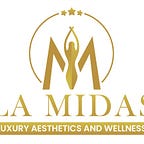Types of Scar by Lamidas
Scars are a natural part of the body’s healing process following an injury, surgery, or skin condition. They form when the skin’s collagen fibres are reorganized during the healing phase, resulting in a different texture and appearance than the surrounding skin. While scars are a testament to the body’s resilience, they can sometimes cause discomfort and self-consciousness. Understanding the different types of scars and how to manage them can help individuals cope with their appearance and ensure optimal healing. This article will explore five common types of scars and discuss effective strategies for scar management.
1. Hypertrophic Scars
Hypertrophic scars are characterized by their raised and red appearance. They occur when an excess of collagen is produced during wound healing, leading to a raised texture. Unlike keloid scars, which extend beyond the original wound site, hypertrophic scars stay within the boundaries of the initial injury. These scars usually develop within the first few months after the wound has healed and may gradually improve.
Management:
- Silicone Gel Sheets: Applying silicone gel sheets to the hypertrophic scar can help flatten and soften the tissue, promoting a more even texture.
- Compression Therapy: Pressure garments or bandages can apply consistent pressure on the scar, which may reduce its raised appearance.
- Corticosteroid Injections: Injections of corticosteroids into the scar tissue can help reduce inflammation and flatten the scar.
- Laser Therapy: Laser treatments can aid in breaking down excess collagen and improving the scar’s appearance.
2. Keloid Scars
Keloid scars are similar to hypertrophic scars but differ because they extend beyond the boundaries of the original wound. These scars are often raised, firm, and have a smooth and shiny appearance. Keloids can be itchy and painful and cause discomfort. They tend to have a genetic predisposition, with specific individuals more prone to developing keloids.
Management:
- Silicone Gel Sheets and Compression Therapy: Similar to hypertrophic scars, silicone gel sheets and compression therapy can be beneficial in managing keloid scars.
- Corticosteroid Injections: Injecting corticosteroids into the keloid can help reduce its size and relieve symptoms.
- Surgical Removal: In some cases, surgical excision of the keloid may be an option, but this approach carries a risk of the scar recurring or worsening.
- Laser Therapy and Cryotherapy: Laser treatments and cryotherapy (freezing the scar) can reduce the size of keloids and improve their appearance.
3. Atrophic Scars
Atrophic scars, also known as “depressed” scars, result from losing underlying tissue during the healing process. They appear sunken or indented and are commonly associated with acne, chickenpox, or injuries that cause fat loss or muscle tissue loss. Atrophic scars can be classified into three main types: ice-pick, boxcar, and rolling scars.
Management:
- Dermal Fillers: Injecting dermal fillers beneath the depressed scar can raise it to the level of the surrounding skin, making it less noticeable.
- Micro-needling: This procedure involves using tiny needles to create controlled micro-injuries in the scar tissue, stimulating collagen production and improving the scar’s appearance.
- Laser Resurfacing: Laser treatments can help smooth the texture of atrophic scars and stimulate collagen production.
-Chemical Peels: Superficial chemical peels can improve the skin’s texture and minimize the appearance of some atrophic scars.
4. Contracture Scars
Contracture scars occur when the skin is severely damaged, often due to burns or significant injuries. As the scar tissue forms, it can tighten and contract, restricting movement and potentially affecting underlying muscles and nerves. Contracture scars can be painful and cause functional limitations, mainly if they form over joints.
Management:
- Pressure Garments: Wearing pressure garments over the contracture scar can help prevent excessive tightening and promote more flexible healing.
- Physical Therapy: Gentle stretching and exercises under the guidance of a physical therapist can help maintain or improve range of motion.
- Scar Massage: Massaging the scar tissue can help prevent adhesions and improve flexibility.
- Surgery: In severe cases, surgical intervention may be necessary to release the tightened scar tissue and restore functionality.
5. Stretch Marks (Striae)
Stretch marks are a form of scarring that occurs when the skin is stretched rapidly during pregnancy, growth spurts, or rapid weight gain or loss. Initially, stretch marks appear as reddish or purple lines, but they often fade to a lighter colour over time. While they are not harmful, stretch marks can cause concern due to their appearance.
Management:
- Topical Treatments: Creams and lotions containing ingredients like retinoids, hyaluronic acid, and vitamin C may help improve the appearance of stretch marks.
- Laser Therapy: Laser treatments can stimulate collagen production and reduce the redness or pigmentation of stretch marks.
- Microneedling: Like atrophic scars, microneedling can encourage collagen synthesis and improve the texture of stretch marks.
Conclusion
Scars are a natural part of the body’s healing process, but their appearance can vary depending on the type of injury or condition. While it is challenging to eliminate scars, various management techniques can significantly improve their appearance and reduce associated discomfort. Being patient during the healing process and consulting a dermatologist or healthcare professional for personalized advice and treatment options is essential. Remember that each individual’s skin is unique, and what works for one person may not be suitable for another. Individuals can regain confidence and embrace healing their skin with proper care and management.
https://www.youtube.com/watch?v=yEGxDJBxG44
To know more ,Book your appointment with Lamidas
